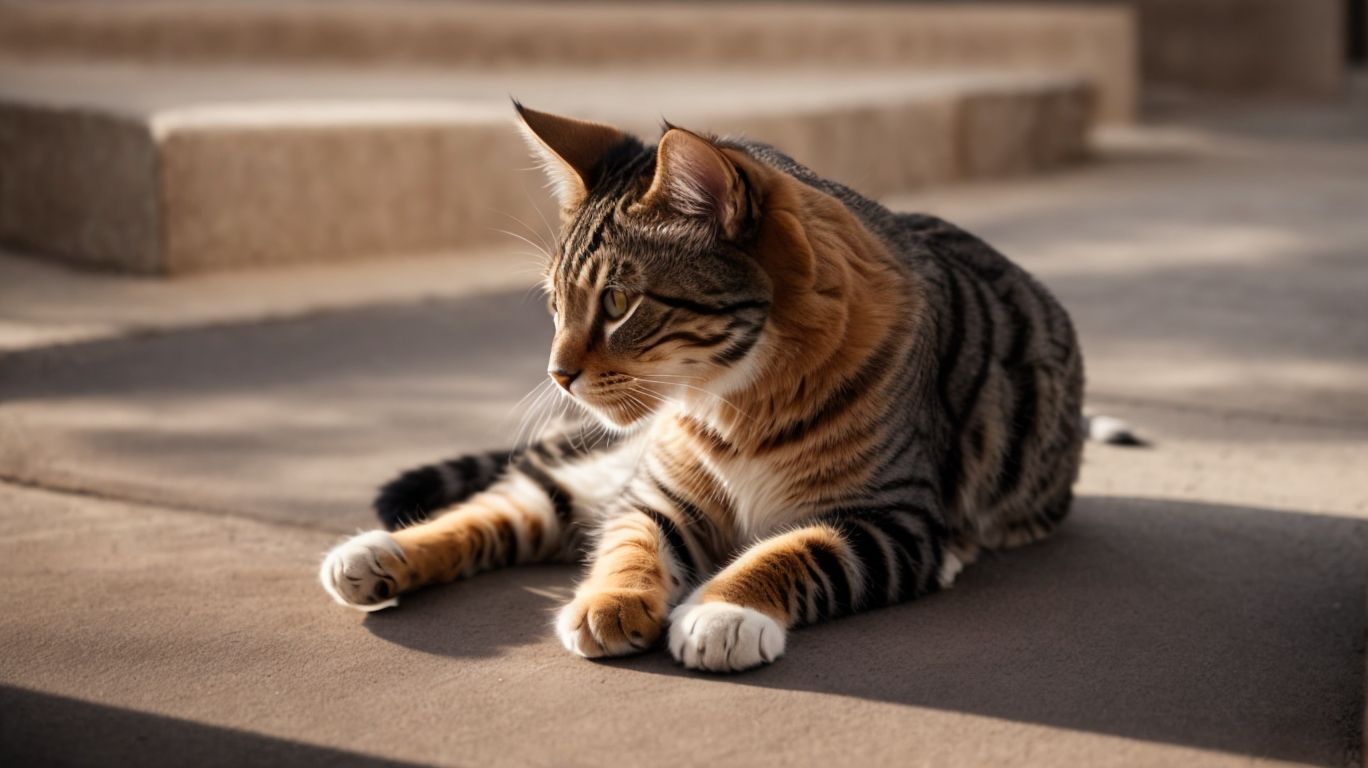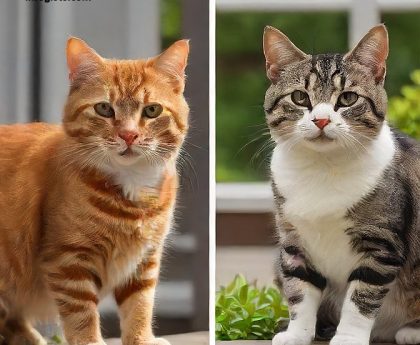The Psychology of Cat Behavior
Have you ever wondered why your feline friend acts the way they do?
Understanding cat behavior is essential for building a strong bond with your pet.
This article delves into the fascinating world of feline psychology, exploring the role of genetics and environment, common behaviors and their meanings.
Discover why cats purr, meow, scratch furniture, and even bring home dead animals.
Learn how to modify unwanted behaviors through positive reinforcement training and seeking professional help when needed.
The Importance of Understanding Your Cat’s Behavior
Recognizing the significance of understanding your cat’s behavior is paramount for fostering a harmonious relationship, effective communication, and the overall well-being of your feline companion.
This comprehension not only allows you to address any stressors that may be affecting your cat but also plays a pivotal role in strengthening the bond between you and your feline friend. By tuning into your cat’s behavior cues, you can provide a supportive environment that promotes their feline health and mental well-being. Utilizing this understanding, you can create a nurturing space where your cat feels safe, loved, and truly understood, leading to a happy and thriving relationship.
Why Do Cats Behave Differently Than Dogs?
Cats and dogs exhibit distinct behavioral patterns due to inherent differences in their evolutionary history, instinctual responses, socialization needs, and territorial behaviors.
Cats, being solitary hunters in the wild, have retained their independent nature even when domesticated. This leads them to be more selective in forming bonds and seeking companionship on their terms.
On the other hand, dogs, originating from pack animals, thrive on social interactions and establish clear hierarchies within their groups. These contrasting origins shape how cats and dogs approach relationships with humans as well.
Understanding these underlying factors can help pet owners create enriching environments that cater to the unique psychological needs of both species.
The Role of Genetics and Environment in Cat Behavior
The interplay between genetics and environment plays a pivotal role in shaping a cat’s behavior, influencing their cognitive abilities, social interactions, and responses to external stimuli.
Genetics dictate various aspects of a cat’s behavior, such as temperament, instincts, and predisposition to certain behaviors. For instance, some breeds are known for being more independent, while others are naturally more sociable. These genetic predispositions interact with the environment the cat is raised in, affecting how they learn, adapt, and behave.
Environmental factors like early socialization, exposure to different stimuli, and the overall living conditions significantly impact a cat’s behavior and overall well-being. Therefore, a balance between genetic traits and environmental influences is crucial in understanding and managing a cat’s behavior.
How Does a Cat’s Breed Affect Its Behavior?
A cat’s breed influences its behavior through genetic predispositions, breed-specific traits, and variations in temperament, requiring tailored approaches to behavior modification and understanding feline behavior.
Understanding a cat’s breed is essential for comprehending how certain genetic factors can predispose them to exhibit specific behaviors. For instance, Siamese cats are known to be chatterboxes, while Maine Coons are typically gentle giants. These breed-specific characteristics can play a significant role in determining how a cat interacts with its environment and its human companions. By recognizing these breed-based tendencies, owners can adapt their behavior modification strategies to suit their feline friend’s unique needs, creating a harmonious and fulfilling bond.
How Does a Cat’s Environment Affect Its Behavior?
The environment significantly influences a cat’s behavior, encompassing factors such as enrichment opportunities, stressors, sources of anxiety, and the overall impact on feline health and well-being.
A cat’s environment plays a crucial role in shaping its daily activities and emotional state. Providing a stimulating environment with plenty of opportunities for play, exploration, and mental stimulation can help prevent boredom and destructive behavior in felines. Conversely, exposure to constant stressors or triggers of anxiety, such as loud noises or changes in routine, can lead to negative repercussions on a cat’s overall health. Therefore, implementing environmental enrichment strategies and stress management techniques are key in promoting a cat’s mental and physical well-being.
Common Cat Behaviors and Their Meanings
Understanding common cat behaviors and their meanings provides insights into feline communication, emotional expression, grooming habits, hunting instincts, and the significance of body language and pheromones in feline interactions.
Cats are known for their sophisticated communication cues that go beyond meowing. When a cat rubs its face against you, it’s not just seeking attention but also marking you with its scent, a sign of affection and territorial ownership. A cat’s tail position can reveal its mood – an upright tail indicates confidence, while a twitching tail may show agitation or playful excitement. Grooming rituals not only help cats stay clean but also serve as a way to bond with other cats or humans. Understanding these nuances enriches the relationship between humans and our feline companions.
Why Do Cats Purr?
The act of purring in cats serves as a multifaceted form of communication, reflecting emotions, fostering bonding, promoting relaxation, and contributing to overall feline health and well-being.
It is fascinating to note that cats use purring not only to express contentment but also as a means to communicate various emotions such as comfort, reassurance, and even anxiety. This gentle vibration not only aids in establishing a connection with their human companions but also enhances the bond between feline family members. Research suggests that the frequency of a cat’s purr can have therapeutic effects, lowering stress levels, promoting healing, and even potentially reducing inflammation in their bodies.
Why Do Cats Meow?
The vocalization of meowing in cats serves as a primary mode of communication, conveying needs, desires, socialization cues, and behavioral responses, reflecting the intricate dynamics of feline behaviorism.
Meowing is not just a random noise cats make; it’s a nuanced form of expression. For example, a short, pleasant meow may indicate a greeting or a request for attention, while a loud, persistent meow could signal distress or hunger. In multi-cat households, meowing can facilitate social interactions, establishing hierarchies or signaling territorial boundaries.
Understanding the different tones, pitches, and durations of meows can provide valuable insights into a cat’s emotional state and help foster a deeper bond between cats and their human companions.
Why Do Cats Scratch Furniture?
Scratching furniture is a natural feline behavior that serves multiple purposes, including territorial marking, claw maintenance, enrichment, and the need for appropriate training and behavior modification interventions to address potential cat behavior problems.
This behavior is deeply ingrained in cats, as it allows them to mark their territory through scent and visual cues. Providing suitable scratching posts or pads can redirect this instinctual behavior and prevent damage to household items. Enrichment activities such as interactive toys and climbing structures can also help satisfy their need to scratch and play. Consistent training and positive reinforcement techniques are essential in guiding cats towards desirable scratching behaviors, contributing to a harmonious coexistence with their human companions.
Why Do Cats Lick Themselves?
Self-grooming behavior in cats plays a crucial role in maintaining hygiene, regulating stress, exhibiting self-care practices, and occasionally manifesting as compulsive behaviors requiring attention and intervention.
Cats are meticulous creatures when it comes to grooming, spending a significant amount of time each day licking themselves to ensure their fur stays clean and free of debris. This ritual not only keeps their coats healthy but also serves as a way for them to manage stress and anxiety. By engaging in self-grooming, cats release endorphins that help them relax and feel more at ease. If this behavior becomes excessive, it can lead to compulsive licking, causing issues such as fur loss or skin irritation.
Why Do Cats Bring Home Dead Animals?
The behavior of cats bringing home dead animals originates from their innate hunting instincts, social bonding practices, communication strategies, and the reinforcement of the human-animal bond through shared interactions.
When cats bring home dead animals, it serves as a way for them to display their natural predatory prowess to their human companions. In the wild, cats are solitary hunters, and by presenting their kills, they are essentially sharing their hunting success with their adopted human family.
This behavior also aligns with the feline instinct of teaching their young how to hunt, which is a sign of affection and a symbolic gesture of nurturing towards their owners. Through these actions, cats are not only communicating their role as providers but also seeking approval and validation, thus deepening the emotional connection between felines and humans.
How to Modify Unwanted Cat Behaviors
Effectively modifying unwanted cat behaviors involves employing positive reinforcement techniques, behavior therapy interventions, targeted training approaches, and a holistic strategy for resolving complex feline behavior issues.
Positive reinforcement techniques such as clicker training can be highly effective in encouraging desired behaviors in cats. Behavior therapy interventions, like desensitization and counterconditioning, can help address fear or aggression-related behaviors. Incorporating interactive play sessions and environmental enrichment can redirect negative behaviors.
It’s essential to remain consistent in training exercises and provide a stimulating environment to prevent boredom-related issues. By understanding the root cause of the behavior problem and implementing comprehensive strategies, cat owners can facilitate positive behavior modification and foster a harmonious relationship with their feline companions.
Positive Reinforcement Training for Cats
Positive reinforcement training offers a humane and effective approach to shaping desired behaviors in cats, utilizing rewards, cat training tools, and behavior modification techniques to encourage learning and behavior modification.
By implementing positive reinforcement techniques, cat owners can create a positive association between desired behaviors and rewards, making the learning process enjoyable for the feline companions. Rewards such as treats, toys, or praise can be used strategically to reinforce good behavior, gradually shaping the cat’s responses.
In addition to rewards, training tools like clickers or target sticks are often employed to aid in communication and clarity during training sessions. Behavior modification techniques, such as shaping behaviors through successive approximations and capturing desired behaviors as they naturally occur, are essential components of positive reinforcement training for cats.
Redirecting Unwanted Behaviors
Redirecting unwanted behaviors in cats involves identifying aggression triggers, addressing petting-induced aggression, implementing behavior modification strategies, and mitigating feline aggression through effective redirection techniques.
Understanding the triggers that lead to aggression in cats is crucial for successful behavior modification. Cats often display aggression due to fear, territorial instincts, or stress. To effectively redirect this behavior, it is important to create a safe and enriched environment for the cat.
Petting-induced aggression, where a cat becomes overstimulated during petting sessions, can be managed by learning the cat’s body language cues to avoid reaching their tolerance threshold. Behavior modification interventions such as positive reinforcement training and providing outlets for natural behaviors like hunting can also help in redirecting aggressive tendencies in felines.
Seeking Professional Help for Severe Behaviors
For severe cat behaviors that require expert guidance, seeking professional help from a certified feline behavior specialist can facilitate behavior evaluation, personalized behavior therapy, and the development of a comprehensive behavior modification plan.
These specialists possess a deep understanding of feline psychology and behavior patterns, enabling them to accurately assess the root causes of problematic behaviors. Through detailed consultations and observation, they can tailor behavior therapy techniques to address specific issues like aggression, litter box avoidance, or excessive meowing. By collaborating with a behavior specialist, cat owners can gain valuable insights into their pet’s behavior and work towards creating a safe and harmonious environment for both the cat and its human companions.
Frequently Asked Questions
What is the psychology behind cat behavior?
The psychology of cat behavior refers to the study of the mental processes and behaviors displayed by cats. It explores their thought processes, emotions, and motivations behind their actions.
Do cats have emotions?
Yes, cats do have emotions. They are capable of experiencing a range of emotions including fear, happiness, anger, and love. These emotions can be observed through their body language, vocalizations, and actions.
Why do cats groom themselves?
Cats groom themselves as a way to regulate their body temperature, keep their fur clean and maintain their scent. It is also a comforting and relaxing behavior for them.
What are some common behavior problems in cats?
Some common behavior problems in cats include scratching furniture, inappropriate elimination, aggression towards humans or other animals, and excessive meowing. These behaviors can be caused by various factors such as stress, boredom, or medical issues.
How can I understand my cat’s body language?
Understanding your cat’s body language is essential in interpreting their emotions and needs. Some common body language cues include flattened ears, a swishing tail, and dilated pupils. Paying attention to these cues can help you better understand your cat’s behavior.
Can a cat’s behavior be changed?
Yes, a cat’s behavior can be changed through proper training and behavior modification techniques. It is important to identify the root cause of the behavior and address it accordingly. Seek advice from a professional if you are struggling to change your cat’s behavior.





